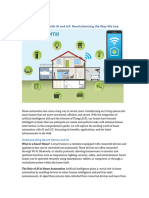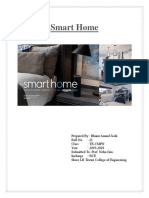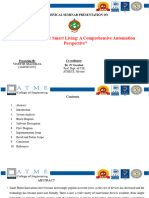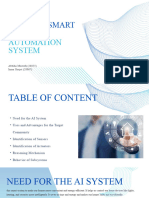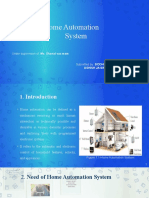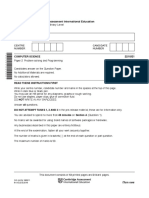0% found this document useful (0 votes)
14 views7 pagesDocument
The document introduces an AI-Powered Smart Home Automation System that personalizes living spaces by learning user habits and preferences. It highlights key features such as voice control, real-time monitoring, and energy efficiency, while emphasizing the importance of security and privacy measures. The future of smart home technology is discussed, including advancements in AI, sensors, and integration with existing systems.
Uploaded by
mohammeediliyassCopyright
© © All Rights Reserved
We take content rights seriously. If you suspect this is your content, claim it here.
Available Formats
Download as DOCX, PDF, TXT or read online on Scribd
0% found this document useful (0 votes)
14 views7 pagesDocument
The document introduces an AI-Powered Smart Home Automation System that personalizes living spaces by learning user habits and preferences. It highlights key features such as voice control, real-time monitoring, and energy efficiency, while emphasizing the importance of security and privacy measures. The future of smart home technology is discussed, including advancements in AI, sensors, and integration with existing systems.
Uploaded by
mohammeediliyassCopyright
© © All Rights Reserved
We take content rights seriously. If you suspect this is your content, claim it here.
Available Formats
Download as DOCX, PDF, TXT or read online on Scribd
/ 7
